Friday Pairings: From Artichoke to Coffee Surprises
A Tasting Journey with Nergiz Sadikoglu in a wine food pairing masterclass
📍Who This Is For
If you build wine flights, design pairing menus, or simply enjoy decoding tricky ingredients, this recap is for you.
I'm Kazumi, a DipWSET and educator based in Amsterdam. With a background in wine and sake, I translate sake through a wine-savvy lens.
Last week, in a sun‑splashed comfort‑food restaurant, Belly Pepper Amsterdam, I joined Nergiz Sadikoglu for her wine‑and‑food pairing masterclass, From Blossom to Barrel. What followed felt less like a lecture and more like a guided adventure: six plates, six pours, and a room humming with curiosity. In this post, I’ll guide you through her pairing universe, anchored in science yet told as a story.
Key Take‑Aways at a Glance
The conversation kept circling the same compass points, then diving a layer deeper:
The Three C’s — commonality, contrast, culture — still orient every match.
Think in layers. Each dish and each wine stacks flavours, textures and accents; great pairings let you ride that stack like a spiral staircase.
Tame the notorious. Asparagus, cured egg yolk, artichoke, can be coaxed into harmony.
Temper fat with acidity so the palate stays creamy, never heavy.
Let umami meet umami. Lees ageing, malolactic complexity, flor nuance and the umami echo of miso and mushroom all speak the same language.
Add a mischievous accent — coffee dusted over cheese, spices or fruits in unexpected places — to keep the table talking.
These are the story of each course and the wine Nergiz poured. Let’s go.
Green Lightning — Asparagus, Yuzu & Cured Egg Yolk with Lena Blanc de Noirs Extra Brut 2021
Acidity wakes the appetite, and Lena Blanc de Noirs Extra Brut 2021 from Rheinhessen delivers a lime‑bright stream of bubbles, shaped by twenty‑four months on lees and a whisper‑low three‑gram dosage. Malolactic roundness layers ripe‑apricot and citrus‑zest notes, plus yellow‑apple lift and a warm‑brioche accent over its zesty core.
Steamed asparagus tips, glazed with yuzu butter and crowned with grated cured egg yolk, look innocent, but they usually flatten wine: green‑sulphur compounds, fat, and glutamate‑rich umami can mute fruit. Here the Pinot‑based sparkler fights back—CO₂ scrubs away the greens, brisk acidity slices through the butter, and lees‑derived creaminess mirrors the yolk. Additionally, the cured yolk turbo‑charges the wine’s subtle savoury edge, gained from lees ageing, turning it into a feather‑light savoury echo—more suggestion than seasoning.
My take: Layers that could clash instead climb: acid cleans, bubbles lift, umami echoes—green lightning across a spring sky. Our palate is ready for the course.
Nuts & Night Flowers — Ajo Blanco, Pastirma & Artichoke × Equipo Navazos “La Bota de Fino No. 115”
Artichoke has a reputation for spoiling wine. It’s key component, cynarin, mutes our sweet‑taste receptors, then lets them rebound hypersensitive, so a hint of sugar can taste oversized. A bone‑dry Fino sidesteps the trap: once the cynarin rinses away, the sherry’s baseline feels even more saline. La Bota 115 delivers a sea‑spray core, green‑almond bite and toasted‑nut grace notes earned from seven years under flor and slow oxidation.
The plate stacks creamy ajo blanco (Andalucía’s chilled almond–garlic soup), salty curls of Turkish pastirma, and braised artichoke hearts. Almond in the soup mirrors the wine’s oxidative nuance; sotolon—the ageing compound that smells of walnut, maple syrup and stock—threads soup and sherry together; pastirma’s salt locks onto the Fino’s brine, while artichoke supplies the chemistry lesson.
My take: On its own this bone‑dry Fino can feel like a dare, all brine and bitter almond for the adventurous. Folded into this dish it turns welcoming: salt softens the edge, almond bridges the gap, and when the last spoonful fades I taste pure chalk and walnut—a puzzle snapping shut around a once‑feared vegetable.
Quiet Thunder — Morel & Scallop Risotto × Sadie Family “Kokerboom” 2021
Old‑vine character meets modern energy in Kokerboom 2021, a Chenin–Sémillon blend drawn from 1930s plantings. Eighteen months on the lees and a full malolactic ferment in neutral oak lend a waxy, honey‑glazed richness that wraps around grapefruit pith, hassaku citrus and a faint lanolin note.
On the plate, sweet scallops nestle among earthy morels, roasted‑carrot purée, miso butter and toasted hazelnut. Nergiz built the bridge in three moves: lees‑born umami to echo mushroom earth; rounded texture to mirror scallop sweetness; and miso’s savoury depth to tether the carrot’s sugar.
My take: That unfolded exactly as she intended, but the real surprise was the wine’s transformation. Kokerboom 2021 usually crackles with youthful acidity, yet the dish gentles that edge: olive‑oil richness smooths the acidity, the purée’s silkiness softens the texture, and the morels tease out hidden mushroom notes. For a moment the young wine channels the nutty, paraffin glow I’ve only tasted in older Kokerboom vintages—quiet thunder rolling beneath a newfound calm.
Sun‑Dried Spice — Fennel, Orange, Fava & Halloumi with Sous le Végétale “Livia” 2022
Pairing wines that share aroma and weight is Pairing 101—the true craft is in how many layers of scent you can coax from the glass.
Enter this skin-contact Muscat from Samos, a dry, island-bright rethink of the grape by French natural-wine icons Jason Ligas and Patrick Bouju. Instead of the usual sweetness of Muscat wine, it brings salty sea breeze, sun-baked herbs, and just-picked flowers. A brief maceration on the skins stretches its spectrum: jasmine, dill, fennel, pickled veg, ginger, and a whisper of cinnamon. A spark of volatile acidity lifts the flavours, while fine skin tannins tame any bitterness, giving the wine a playful, almost cheeky pulse. It has the energy of raw, natural wine, yet stays remarkably clean and precise.
The plate echoed the wine note for note. Vadouvan-spiced vegetables, gently salted and silky, met the Muscat’s citrus-herbal perfume head-on. Soft phenolic grips of the wine mimicked the bitterness in the Fava, while Halloumi’s briny edge mirrored the wine’s coastal snap. That quick flash of volatile acidity didn’t tip into sourness; it simply dialled up the curry-spice tones and kept everything vivid.
My take: The pairing between the veggie and natural wine felt like something I’d expect at Steirereck —though the vegetables weren’t fermented, their light veil of salt and subtle pickled notes echoed the Muscat’s sea-spray herbs, letting acidity and umami build into a vivid, three-dimensional harmony that kept unfurling with every bite.
Crimson Echo — Lamb Shoulder, Rhubarb & Cherry with Praesulis Pinot Noir 2020
Tannin is texture in liquid form—both fruit- and oak-derived tannins add polished grip and spice, while time in barrel lets them soften through polymerisation. Food nudges that texture further: proteins in meat bind and mellow tannins, fats coat the palate and blunt their edge, and a pinch of salt amplifies the smoothing effect. These levers decide whether a red lands like velvet or sandpaper.
Gumphof Praesulis Pinot Nero 2022 from Alto Adige brings the velvet. Mountain-stream acidity and silk-soft seed tannins frame crunchy sour cherry, wild berry, pomegranate and rhubarb, edged with alpine herbs, subtle oak spice and a whisper of rose. Quite vivid acidity coming from high altitude makes it vibrant summer wine.
The plate offers contrast and echo: slow-braised lamb shoulder bathed in sour-cherry jus and streaked with rhubarb compote. Lamb’s gelatinous richness could smother delicate reds, but here the Pinot’s acidity slices the fat, and its fine tannins bind stray proteins, polishing the palate instead of coating it. Rhubarb locks onto the wine’s red-fruit core, so both shine brighter.
My take: Pure synergy in high-definition—the lamb melted the tannins to cashmere, the rhubarb sparked a ruby glow through the fruit, and the wine’s alpine herbs left a mint-cool wake. I kept chasing the whisper of rhubarb that surfaced only after each bite—proof that texture can be as aromatic as scent.
Sweet Trickster — Alpine Cheese Board with Coffee‑Honey Walnut Bread & Barbeito Boal Ten‑Year Madeira
Sweet Trickster — Comté, Honey & Coffee × Barbeito Boal 10 Year Old
From the outside it looked like a bit of chaos: aged Comté, pickled strawberry and rhubarb, raw honey, a dusting of dark-roast coffee powder, walnut bread, and truffle oil. Any one element could hijack a wine—salt, acidity, sweetness, bitterness—yet a ten-year-old Boal Madeira kept the carnival in step. About ninety grams of residual sugar cushion the cheese’s salt, while crackling seven-gram acidity sweeps each bite clean. Long canteiro ageing layers caramelised Seville-orange peel, roasted nuts, and a wisp of curry-leaf sotolon; those oxidative notes echo both walnut and coffee, so nothing feels tacked on.
The surprise star was the coffee powder. Its bitter phenolics flirted with the wine’s toasted-sugar edge, turning each sip into mocha-orange fudge before the acidity flicked the lights off. Drizzled honey bridged the gap, truffle oil whispered earth, and the pickled fruit laced everything with a high-wire tang.
My take: This plate re-wrote the cheese plate script: coffee dust met Boal’s burnt-orange glow, salt sharpened the sweetness, and the wine’s laser acidity reset the palate for another bite. It felt like sipping espresso, nibbling candied citrus, and stealing walnut fudge—simultaneously. I’m now a firm believer in coffee as cheese’s mischievous sidekick.
Why These Pairings Matter
Foundation first, then flight. In Japan we talk about 守破離 (shuhari): shu means mastering the basics, ha breaking them with purpose, and ri transcending them altogether. Nergiz began with time‑tested rules—the Three C’s, the acid‑fat handshake—then showed how to bend them without breaking the glass.
Science as the safety net. Each flavour decision rested on measurable chemistry: tannins binding protein, cynarin numbing sweetness receptors, glutamate amplifying umami. Feeling and thinking worked in concert, proving that great pairings are equal parts intuition and equation.
Playfulness as the spark. Coffee on Comté, Turkish or Greek accents —these twists jolted us awake. When the coffee powder met Boal’s oak aging character, the room actually laughed. Serious knowledge, delivered with a wink.
Inspiration that travels home. I left craving my chopping board. The class made me want to braise, pickle and pan‑sear, then test the line between wine and sake all over again. The next time asparagus, lamb or coffee wander into my kitchen, I’ll reach for the lessons—and the bottle—Nergiz handed me. Thank you.
So here’s to building the basics, breaking them with bravado, and cooking up something that makes the table lean in.
📌 Let’s Trade Notes
Did anything in this story make you curious about pairing? Whether you're new to it or looking to deepen your knowledge, I’d love to hear what sparked your interest. Leave a comment or reply.
This post is part of my Tuesday Sake 101 series, where I explore the foundations of sake through a wine-savvy lens. It pairs with my Friday pairing series, where I share unexpected food & wine (or sake) combinations from across Asia and beyond. Next up is — How to Pair Sake with Western Dishes: Essence from a Sake Pairing Master Class.
👉 If you found this useful, subscribe to get each week’s edition in your inbox—and feel more confident recommending sake at your shop, bar, or table.
Thanks for reading Pairing the World: Wine, Sake, and More!
金曜ペアリング:アーティチョークからコーヒーの驚きまで
ペアリングのマスター、ネルギスと巡るテイスティングジャーニー
📍こんな人におすすめ
ワインを選びたい方、ペアリングメニューを組み立てる方、あるいは少し扱いづらい食材の合わせ方に興味がある方にぴったりのレポート。
こんにちは、Kazumiです。DipWSETを取得し、アムステルダムを拠点にワインと日本酒の教育に携わってきました。ワインの知識をベースに、日本酒の世界をわかりやすく伝えることをライフワークにしています。
先週、アムステルダムの陽だまりのようなレストラン「Belly Pepper」で開かれた、ネルギス・サディコグルのワインと料理のペアリング・マスタークラス「From Blossom to Barrel」に参加しました。講義というよりは、ガイド付きの冒険のような時間でした。6皿の料理に6種類のワイン。そして、好奇心に満ちた空間がそこにありました。
この記事では、ネルギスがつくりあげたペアリングの世界を紹介します。科学的なロジックに裏打ちされつつも、語り口はあくまでストーリー仕立て。どうぞ最後までお付き合いください。
印象に残ったポイントまとめ
会話の焦点は、何度も同じテーマに戻りつつ、深く掘り下げられていきました。
Three C’s(共通点、対比、文化)は、ペアリングの軸として機能していました。
レイヤーを意識すること。 料理もワインも、味、食感、アクセントが何層にも重なっていて、優れたペアリングはその層をらせん階段のように楽しませてくれました。
扱いにくい食材にも工夫を。 アスパラガス、いくら、アーティチョークなど、ワインの天敵と思われがちな食材も、美しく調和していました。
脂には酸で対抗する。 口の中がクリーミーなまま、重たくならずにすんでいました。
旨味同士の共鳴。 澱熟成やマロラクティック発酵、フロールの香り、味噌やきのこのような旨味がしっかり響き合っていました。
ちょっとした驚きが会話を生む。 チーズにかけたコーヒーや、意外な場所に潜ませたスパイスや果実が、テーブルを盛り上げていました。
このあとは、ネルギスが用意した6皿と、それぞれに合わせたワインのペアリングを振り返ります。
アスパラガス、柚子、いくらの醤油漬け × Lena Blanc de Noirs Extra Brut 2021
食欲のスイッチを入れてくれたのは、ラインヘッセン産のスパークリングワイン、Lena Blanc de Noirs Extra Brut 2021でした。24か月の澱熟成と3グラムというごく少量のドサージュにより、ライムのような明るい酸と繊細な泡立ちが生まれていました。マロラクティック発酵による丸みが、熟したアプリコットや柑橘の皮、黄リンゴのような果実感に重なり、ブリオッシュのようなふんわりとした香ばしさも感じられました。
料理は、柚子バターでつやを出したアスパラガスの穂先に、すりおろしたいくらの醤油漬けをトッピングした一皿。見た目はシンプルながら、アスパラが出すグリーン系の硫黄化合物、脂肪分、グルタミン酸による旨味がワインの果実感を消してしまいがちで、難易度の高い組み合わせです。けれどこのワインは、二酸化炭素が青っぽさを洗い流し、キレの良い酸がバターをさっぱりさせ、澱由来のクリーミーさが卵黄のコクを見事に受け止めていました。いくらの醤油漬けはさらにワインの旨味を引き出し、軽やかな旨味のシナジーを生んでいました。
👉 ポイント: 本来ならぶつかりそうな層が、むしろ階段のように重なり合って昇っていく。酸が整え、泡が持ち上げ、旨味が響き合う。まるで春の空に走る緑の稲妻のようでした。アペリティフとして素晴らしい1品。
アホ・ブランコ、パストゥルマ、アーティチョーク × Equipo Navazos “La Bota de Fino No. 115”
アーティチョークは、ワインとの相性が難しい食材として知られています。主成分のシナリンが甘みの受容体を一時的に鈍らせたあと、逆に過敏にするため、わずかな甘さが必要以上に強く感じられるのです。ですが、極辛口のフィノならその罠をすり抜けることができます。La Bota de Fino No. 115は、7年間フロール下で熟成され、海風を思わせる塩っ気のあるコア、青いアーモンドの苦味、トーストしたナッツのような優しい香ばしさが印象的でした。
料理は、アンダルシアの冷製スープ「アホ・ブランコ」(アーモンドとにんにくを使った白いスープ)、トルコのパストゥルマ、そしてやわらかく煮たアーティチョークの組み合わせ。スープに使われたアーモンドがワインの酸化的な風味を映し出し、熟成によって生まれるソトロン(くるみやメープルシロップ、出汁のような香り)が料理とワインをなめらかにつないでいました。パストゥルマの塩味がワインの塩気と響き合い、アーティチョークが理屈抜きでその場を支配していました。
👉 ポイント: フィノ単体では少し挑戦的に感じられるかもしれませんが、この料理と合わせることで一気に懐の深い存在へと変わりました。塩が角を取り、アーモンドが橋をかけ、最後のひと口にはチョークとくるみの余韻だけが静かに残りました。
モリーユ茸とホタテのソテー、人参のピューレ添え × Sadie Family “Kokerboom” 2021
次に登場したのは、南アフリカの古木から生まれたKokerboom 2021。1930年代に植えられたブドウからつくられる、シュナン・ブランとセミヨンのブレンドです。澱とともに18か月熟成され、中立的なオーク樽でマロラクティック発酵を行ったことで、蜜蝋のようなテクスチャーとハチミツがけのようなリッチさが感じられました。その中に、グレープフルーツの皮、八朔のような柑橘、わずかなラノリン香が重なっていました。
皿の上には、甘みのあるホタテに、モリーユ茸の土っぽさ、人参のピュレ、味噌バター、トーストしたヘーゼルナッツが重ねられていました。ネルギスは、旨味、テクスチャー、甘みと塩味のコントラストという3つの視点で、料理とワインをつなげていました。澱由来の旨味がきのこの土っぽさと響き合い、ワインの丸みがホタテの甘さを映し、味噌がキャロットの自然な甘みを深めてくれていました。
👉 ポイント: 計算通りの美しい組み合わせでしたが、本当の驚きはワインの変化にありました。若いビンテージなので、通常なら鋭く感じられる酸が、オリーブオイルのコクとキャロットピュレの滑らかさによってやさしくなり、モレルがワインに隠れていた“きのこ的”ニュアンスを引き出していました。この若いワインが、熟成を経たKokerboomのようなナッツやパラフィンの温もりをまとってくれ、まさに、穏やかな雷鳴のような一杯でした。
フェンネル、オレンジ、ファヴァ豆、ハルーミチーズ × Sous le Végétale “Livia” 2022
続いて登場したのは、ギリシャ・サモス島産のスキンコンタクト・マスカット「Livia 2022」。フランスのナチュラルワインの名手、ジェイソン・リガスとパトリック・ブジュによる共作で、マスカット=甘口という常識をくつがえす、塩気とハーブに満ちた辛口の仕上がりでした。短期間のスキンマセレーションによって、ジャスミン、ディル、フェンネル、ピクルス、ジンジャー、シナモンといった香りが立ち上がり、揮発酸の軽やかな刺激が味わいを引き上げていました。ナチュラルなワインらしい野性味がありつつも、仕上がりは驚くほどピュアでクリーンです。
料理は、ヴァドゥヴァン(南インド風のカレースパイス)で軽く風味づけされた野菜に、ファヴァ豆、ハルーミチーズを添えた一皿。野菜は発酵していないものの、軽い塩味と柔らかい食感があり、ワインとの調和が自然に感じられました。柑橘の皮のようなワインの香りが料理に寄り添い、ファヴァ豆のほろ苦さとワインの穏やかなタンニンがぴたりと重なりました。ハルーミの塩気も、ワインが持つ海風のようなミネラル感と響き合っていました。
👉 ポイント: 発酵していない野菜でも、塩味やスパイスが加わることで、ナチュラルワインとの相性が一気に高まる好例でした。酸と旨味のレイヤーがいくつも重なり合い、香りも味も立体的に展開していきます。まるでウィーンの名店「Steirereck」で体験したような、野菜とナチュラルワインの知的で洗練されたマリアージュでした。
ラムショルダー、ルバーブ、チェリー × Praesulis Pinot Noir 2022
タンニンとは、液体のなかに溶け込んだテクスチャーのようなもの。果実やオークから由来するタンニンが、それぞれに磨かれたグリップとスパイス感をもたらし、樽熟成の過程でポリマー化することでさらに滑らかになっていきます。食材側にもその印象を左右する力があります。肉のタンパク質はタンニンを穏やかにし、脂肪分は口内をコーティングしてその作用を鈍らせ、塩味はなめらかさを一層引き立ててくれます。
今回合わせたのは、アルト・アディジェのGumphof Praesulis Pinot Noir 2022。山の湧き水のようなフレッシュな酸と、種由来のシルクのように滑らかなタンニンが、サワーチェリー、野生ベリー、ザクロ、ルバーブのような赤系果実を縁取り、アルプスのハーブ、繊細なオークスパイス、バラの香りがそこに重なっていました。
料理は、じっくり煮込んだラムショルダーに、サワーチェリーのジュとルバーブのコンポートを添えた一皿。ゼラチン質をたっぷり含んだラムは、繊細な赤ワインを包み込んでしまう可能性がありますが、ピノの酸がその脂をスパッと切り、柔らかなタンニンが余分なタンパク質を結びつけて、口の中をコーティングすることなく、すっきりと磨き上げてくれました。ルバーブの酸味は、ワインの果実味と響き合い、両者の輪郭をよりくっきりと際立たせてくれました。
👉 ポイント: タンニンがラムの脂でカシミアのようにとろけ、ルバーブが果実にルビーのような輝きを与え、ハーブの清涼感が静かに余韻を引き締めてくれました。一口ごとに微かに香るバラのニュアンスを探すように味わっていた自分がいて、テクスチャーが香りとして立ち上がる瞬間を体験できました。
コンテチーズ、ハチミツ、コーヒー × Barbeito Boal 10 Years Old Madeira
最後に登場したのは、甘味・酸・塩味・苦味全て揃うというワインの天敵が一皿に詰まったような、チーズプレートでした。熟成コンテに、ピクルスにしたイチゴとルバーブ、はちみつ、ダークローストのコーヒーパウダーをひとふり。さらにトリュフオイルとクルミパンが提供されました。
一見するとカオスに思えるこの構成を、見事にまとめあげたのがBarbeito Boal 10年熟成マデイラでした。約90gの残糖がチーズの塩気をやわらげ、7gの鋭い酸がひと口ごとに口の中をリセットしてくれました。カンテイロ熟成による酸化のニュアンスは、キャラメリゼしたオレンジピールやローストナッツ、そしてソトロン由来のほんのりとしたカレーリーフの香り。これらがコーヒーやクルミと響き合い、まったくバラバラに感じさせませんでした。
驚きだったのは、コーヒーパウダーの存在です。苦味成分がワインのキャラメリゼ感と重なり、まるでモカとオレンジのファッジのような味わいに。はちみつが甘みの橋渡しをし、トリュフオイルが土っぽさを添え、ピクルスの酸が全体に垂直なアクセントを加えていました。
👉 ポイント: これはもうチーズプレートの常識を覆す構成でした。コーヒーの苦味がマデイラの甘みを研ぎ澄まし、酸が口内をシャープに整えてくれる。エスプレッソ、柑橘の砂糖漬け、クルミのファッジを一度に味わっているような感覚。チーズにコーヒーをふりかける、というアイデアを今度ぜひ自分のテーブルでも試してみたいと思いました。
なぜこのペアリングが響いたのか
基本を学んでからこそ飛躍がある。日本では「守破離(しゅはり)」という言葉があります。守=基本を忠実に守る、破=それを意図的に破る、離=そして自分のスタイルを確立する。ネルギスは、Three C’sや酸と脂のバランスなど、王道のルールをしっかり押さえたうえで、それらを崩す面白さも見せてくれました。
どのペアリングも、直感と理論の両方に支えられていました。タンニンとタンパク質の結合、甘味受容体に影響を与えるシナリン、旨味の増幅に働くグルタミン酸など、科学的根拠がしっかりと感じられました。
そして何よりも、遊び心が随所に光っていました。コンテチーズにコーヒー、アーティチョークにフィノシェリー——これらのひと工夫が味覚だけでなく、会話のきっかけを生み出していたのです。コーヒーパウダーと熟成マデイラの瞬間に、会場が思わず笑顔になる——そんな場面も印象的でした。
家に持ち帰ったインスピレーション
このマスタークラスを終えてまず思ったのは、「キッチンに立ちたい」という衝動でした。煮込んでみたい、漬けてみたい、焼き付けてみたい。そして再び、ワインと日本酒の境界線を自分の手で確かめてみたい。
次にアスパラガスやラム肉、コーヒーがキッチンに現れたら——ネルギスが示してくれたあのレッスンと、あの一本のボトルを思い出すことになるでしょう。
食卓に耳を傾けさせる料理とワイン。そのヒントが、ここには詰まっていました。
📌 あなたはどう思いましたか?
この記事を読んで、「ペアリングって面白そう」と感じた瞬間はありましたか? まだ飲んだことがなくても、もっと知りたいと思った方でも、ぜひ感じたことをコメントで教えてください。
読んでくださってありがとうございます!
「Pairing the World: Wine, Sake, and More!」は、ワインと日本酒の世界をつなぐブログです。購読は無料ですので、ぜひ下記のボタンから購読して下さい。🍶🍷」
「日本酒やワインの魅力を、自分の言葉で伝えられるようになりたい、日本と海外の架け橋になりたい」そう考えて、英語で書いています。この取り組みが、日本酒に関わる方々にとって「応援したくなる活動」だと感じていただけたら幸いです。また、コラボレーションのアイデアをお持ちのインポーター、酒蔵、ワイン日本酒関連の皆様、下記からご連絡をお待ちしております。



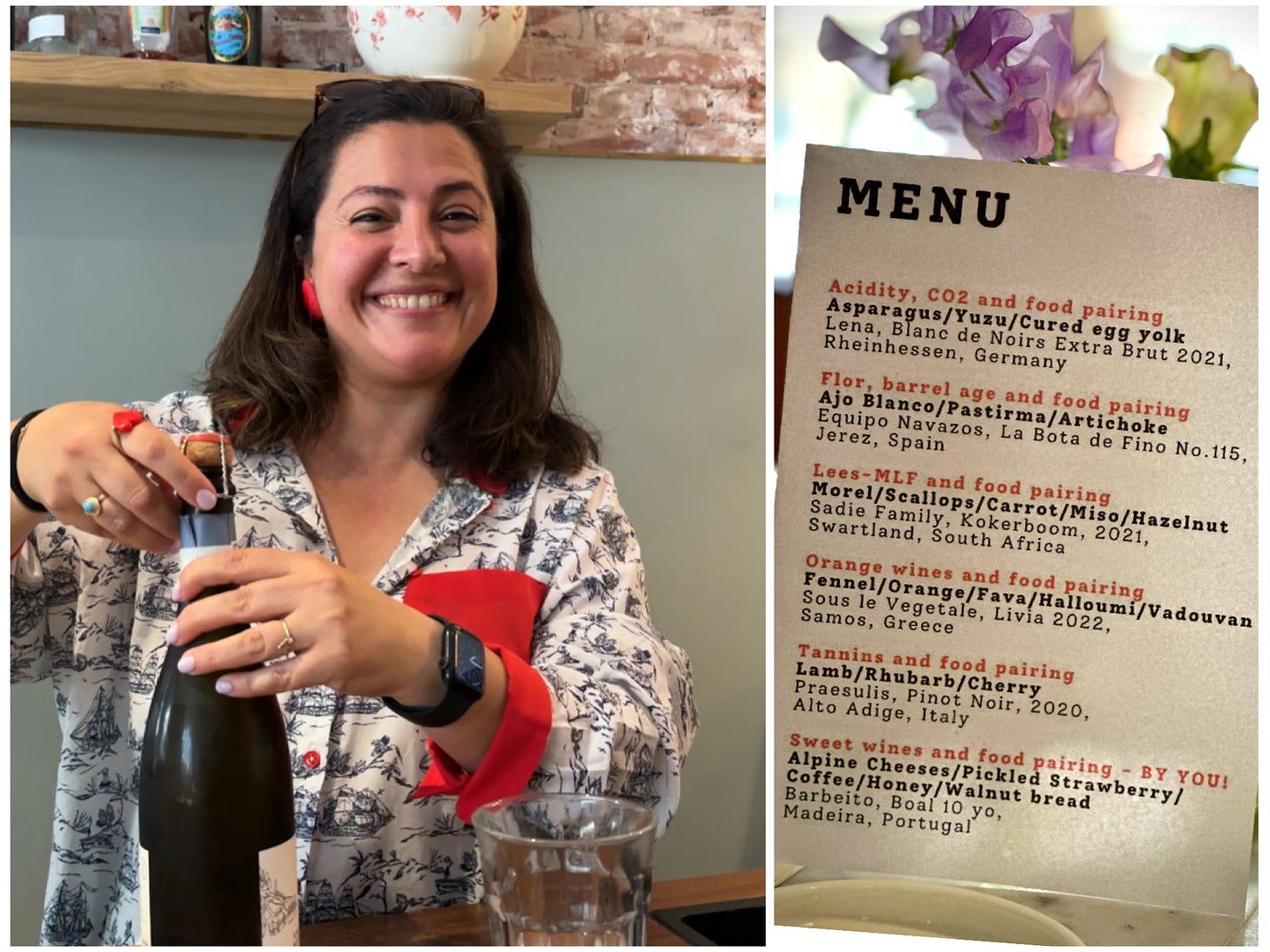
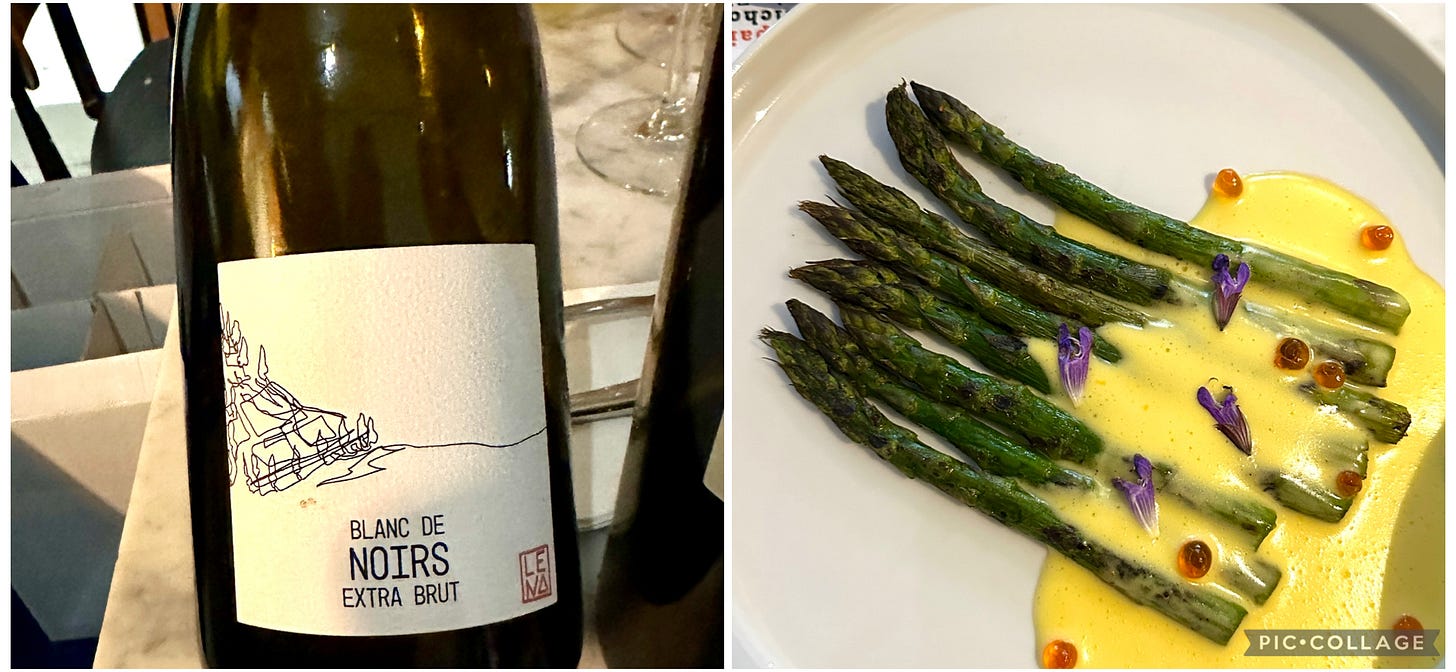
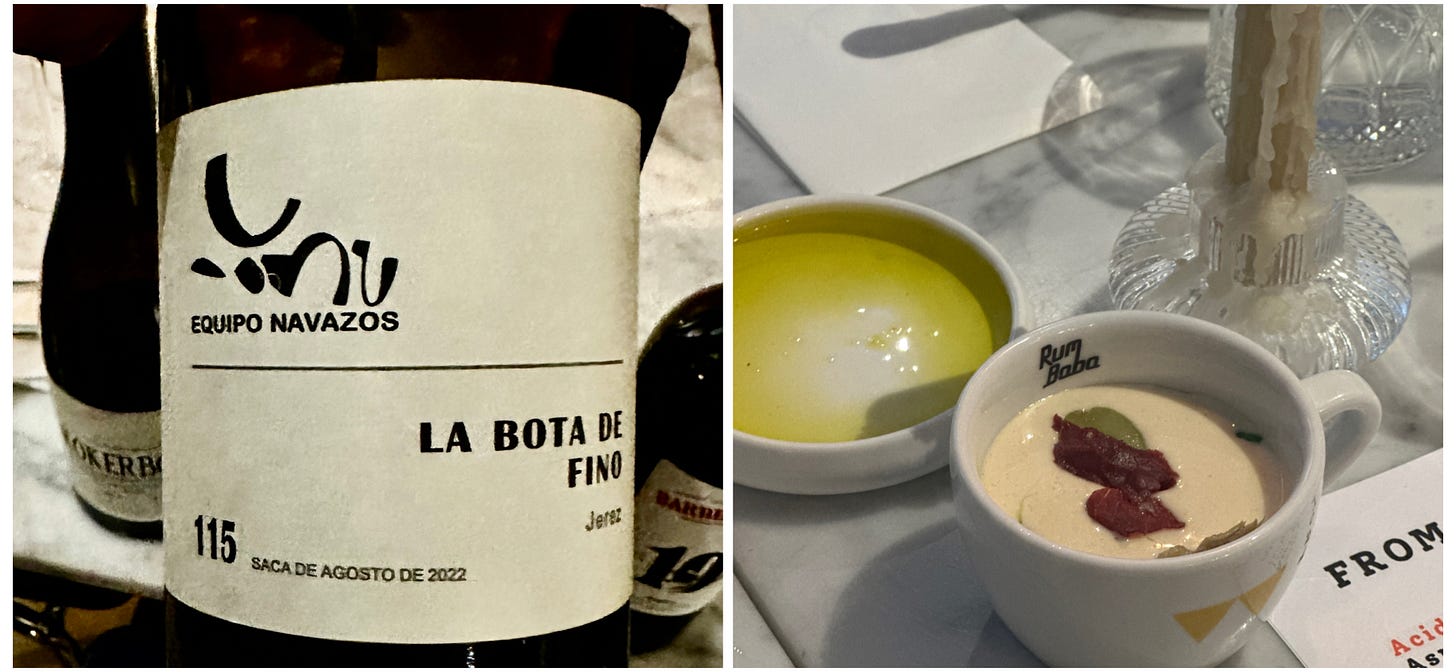
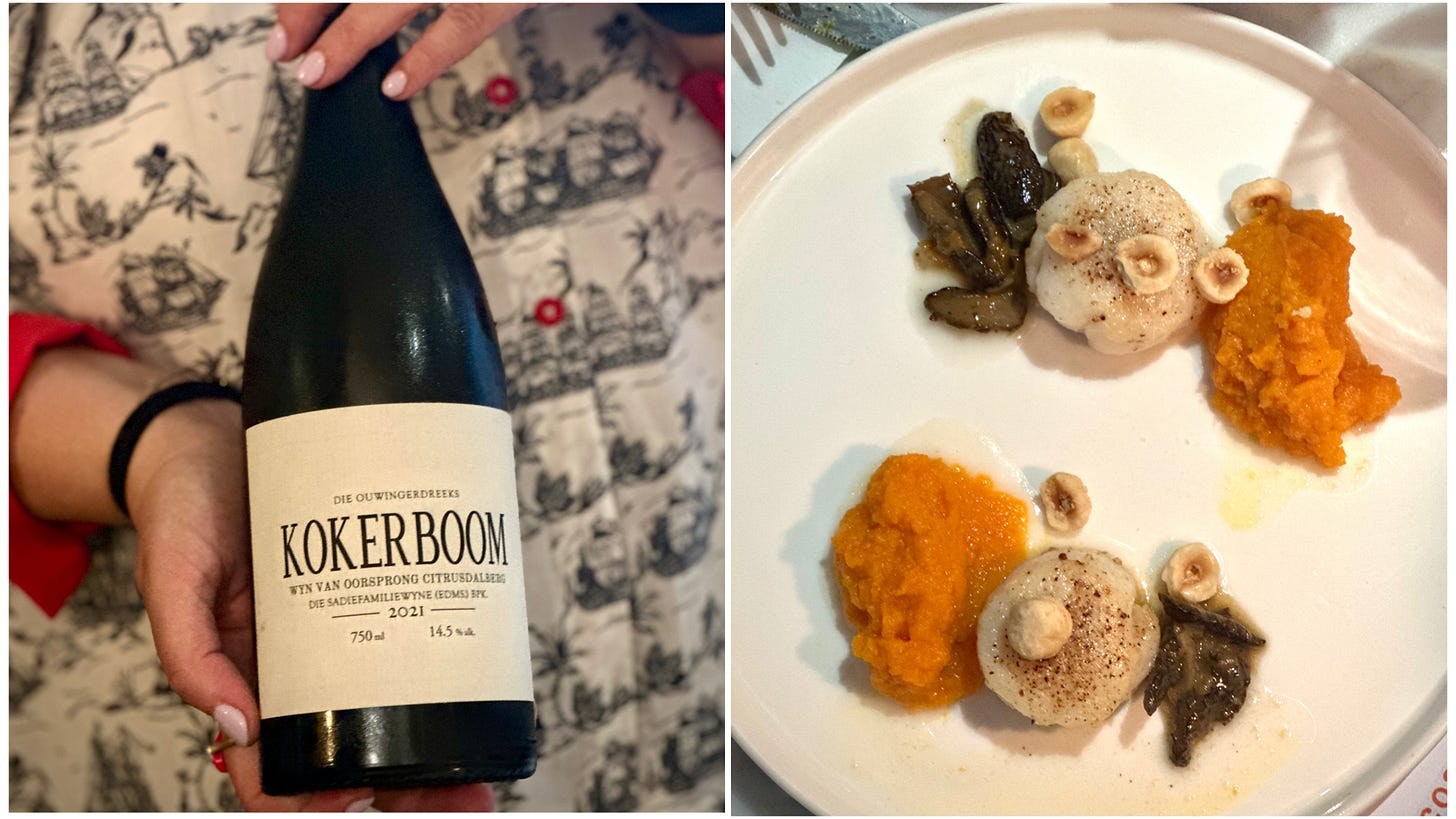



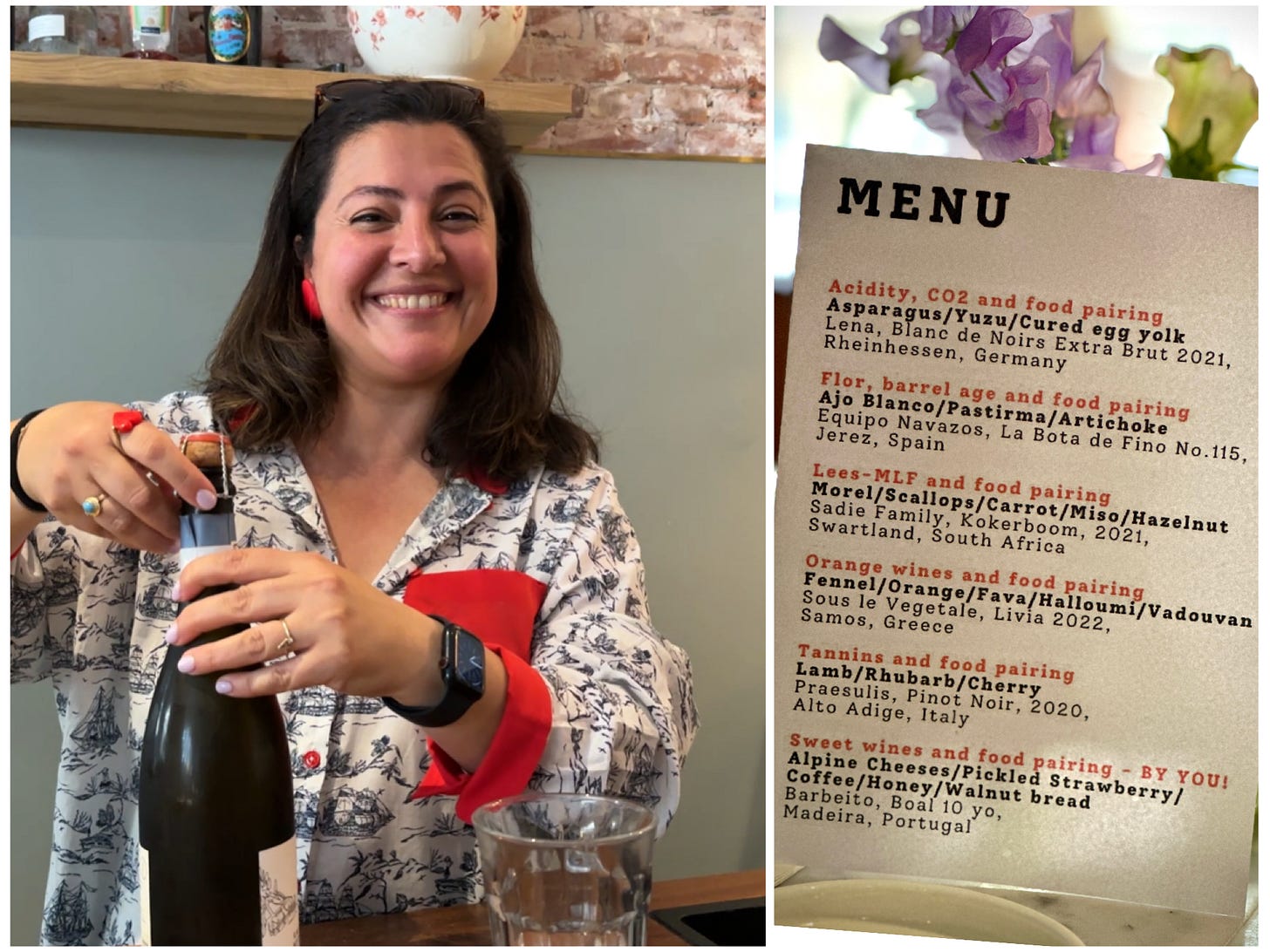
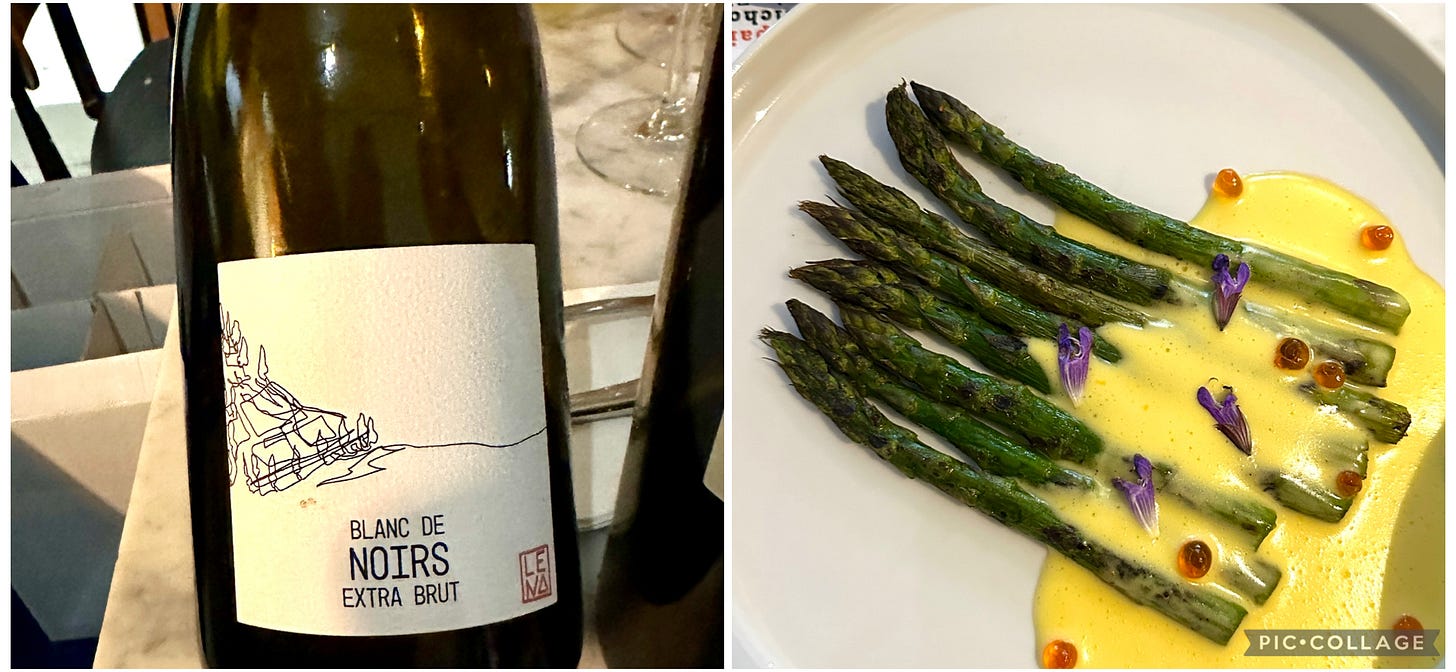
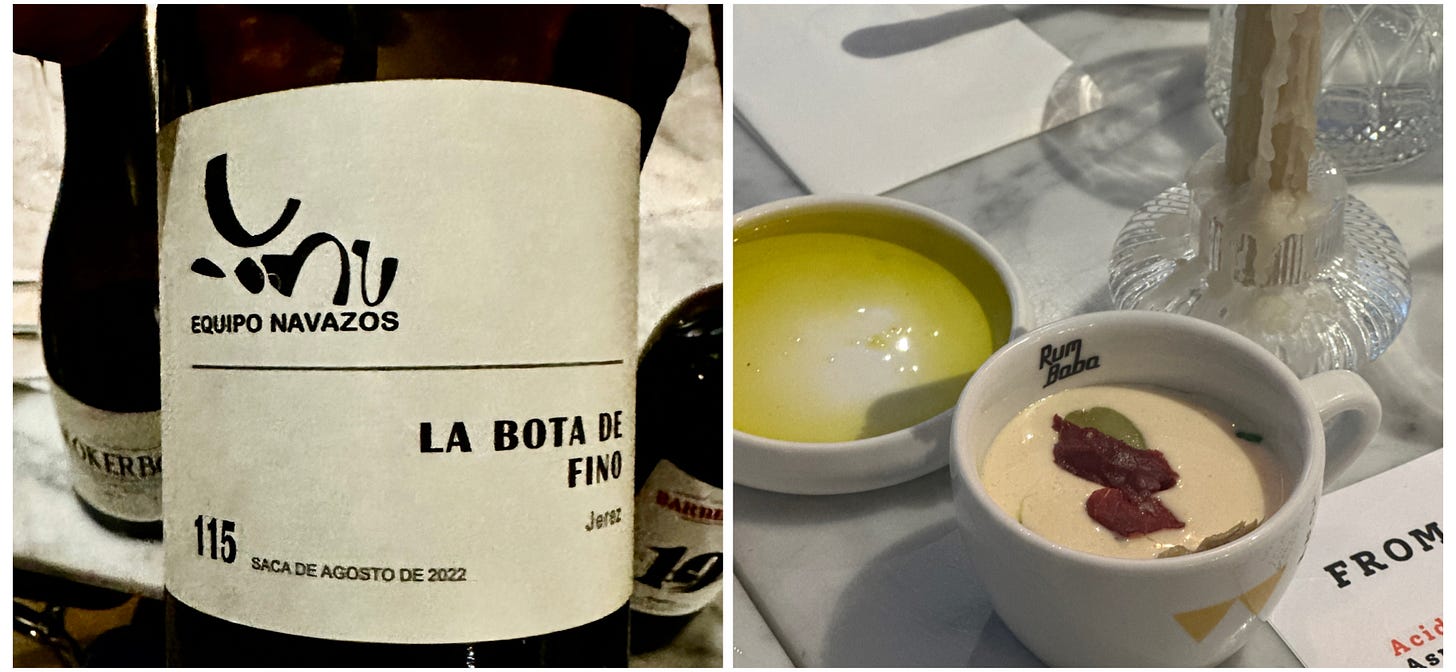

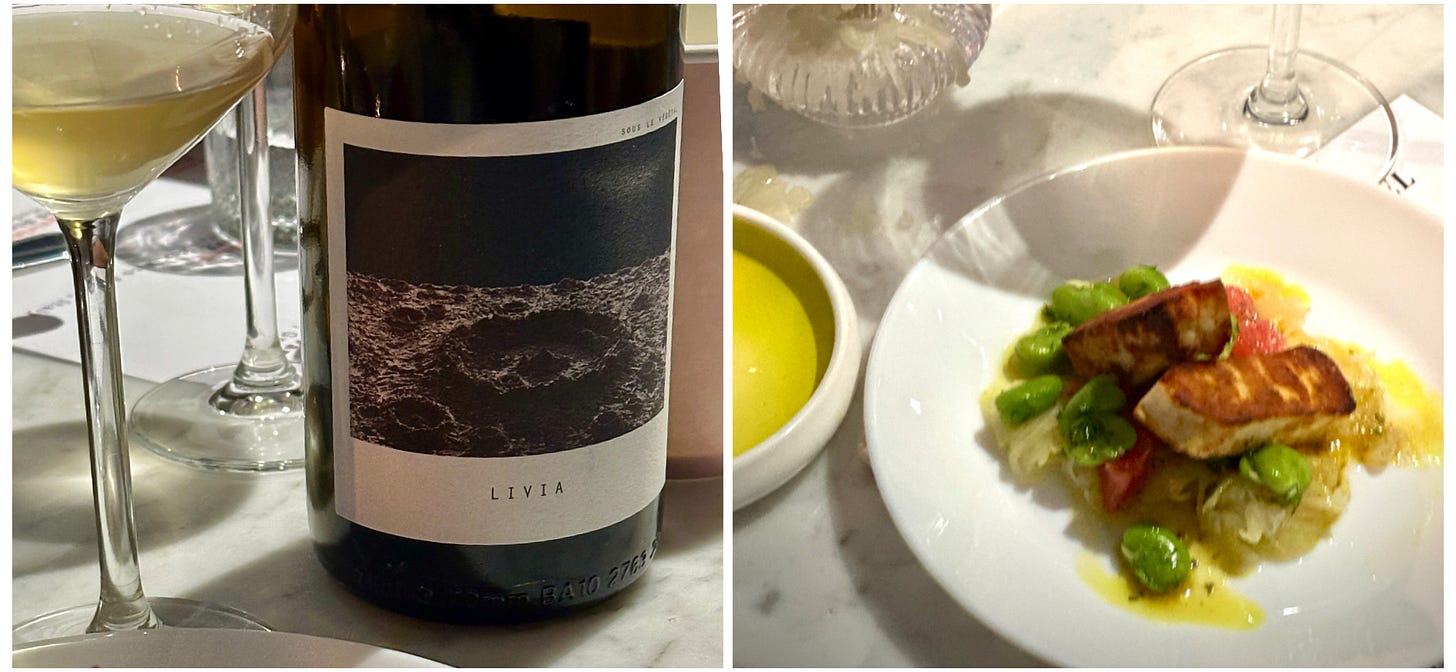
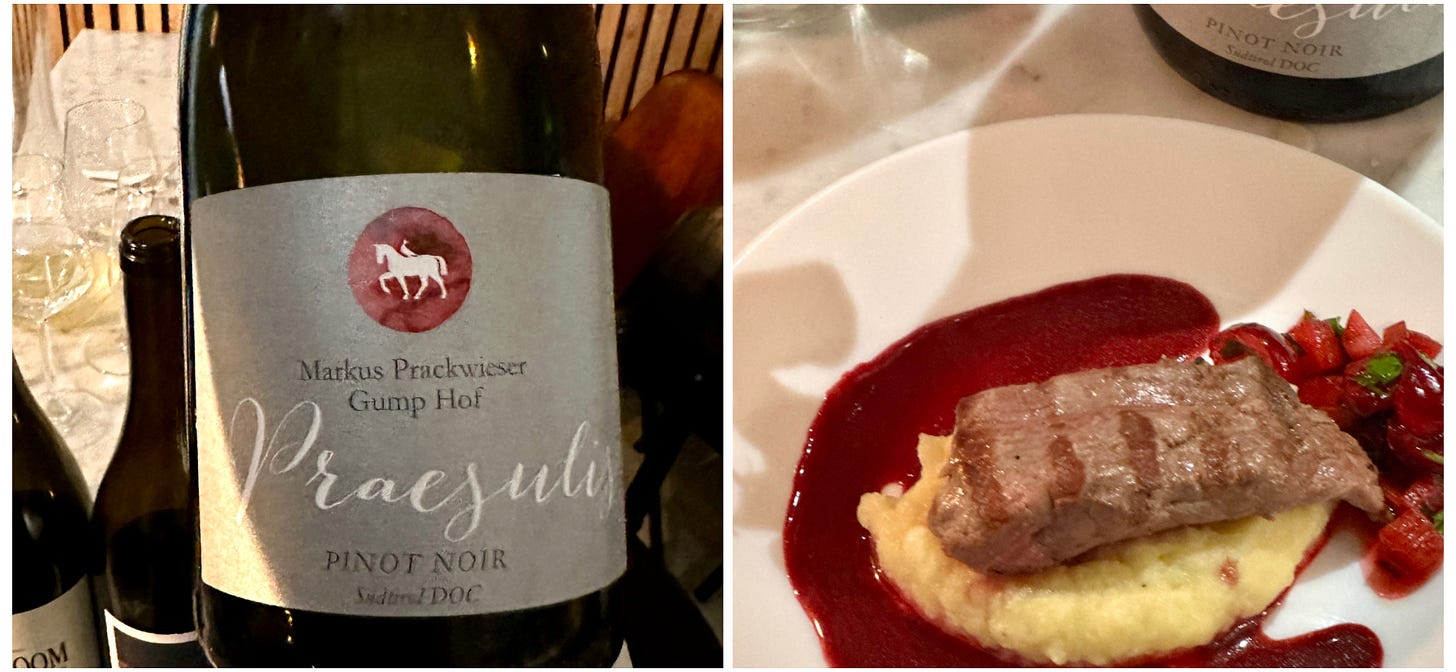
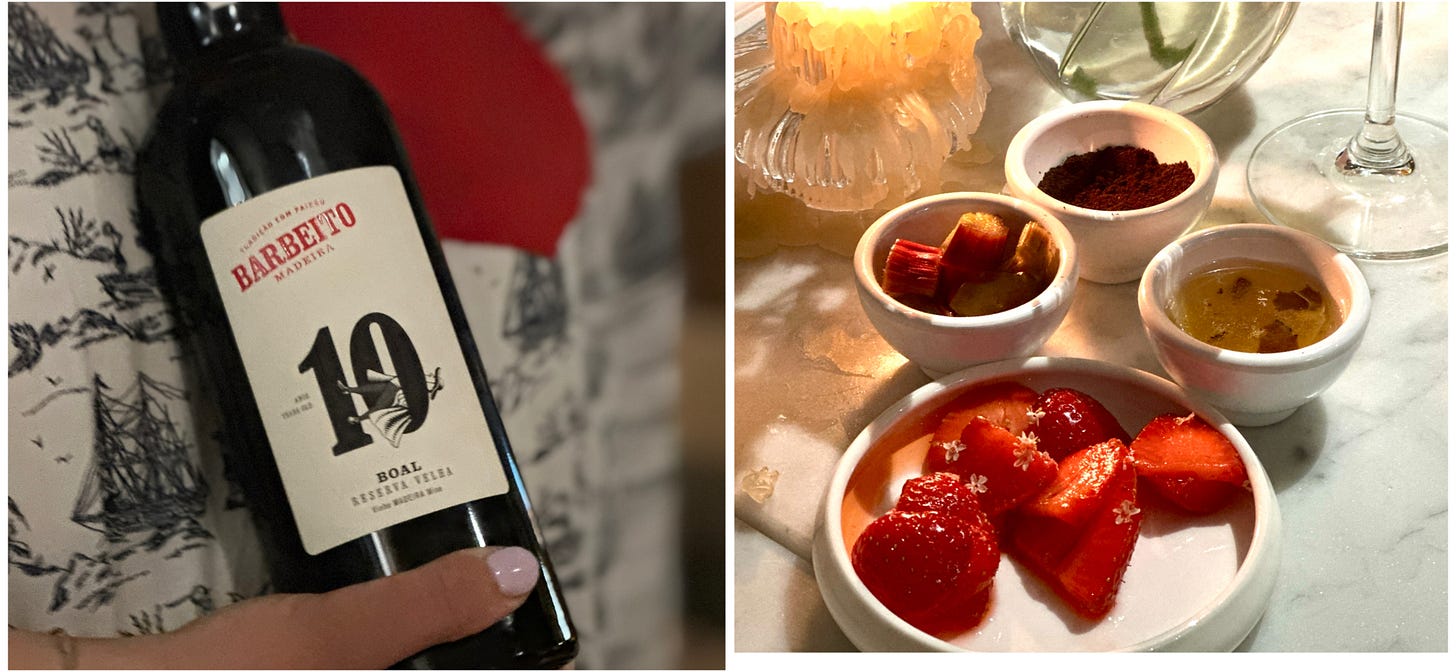
Fascinating---thank you.